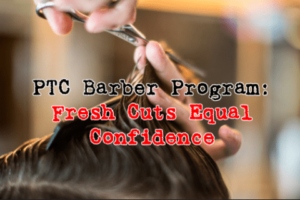Collision Repair Program
Collision Repair instructor Anthony Larson works hard to give his students the best possible avenue to a lucrative career in the auto body and repair industry. Larson knows what it took to build his business from the ground up, and he’s eager to share his knowledge with all his students who have the same passion as he does for collision repair.
Part of why the Collision Repair program at Pickens gives students an excellent start to their careers is because Larson uses the new and updated I-CAR Advanced Tech Curriculum, which takes students through a rigorous course in repairing damage to cars after collisions and more. This curriculum supports your opportunity to earn the Non-Structural Repair Technician Certificate, the Refinish and Paint Technician Certificate, and the Professional Collision Repair Certificate.
In November, I-CAR announced changes to its core education and recognition programming that would take place in addition to enhancements it already made to its programming back in August.
Enhancements Responding to Feedback
This latest round of changes made to the curriculum comes from recommendations and feedback from customers and inter-industry educational experts, including collision repairers, OEMs, and insurers.
“I-CAR’s newly developed programs have been fine-tuned as a result of working closely with experts from the inter-industry to enhance our already successful core education, training and recognition programs, as well as methods of program delivery, to meet the needs of today’s and tomorrow’s collision repair professionals,” said John Van Alstyne, CEO, and president of I-CAR.
Van Alstyne also said that these changes were designed to help shops implement changes while allowing technicians to meet their training requirements. Overall, the changes are supposed to help auto workers stay ahead of this rapidly-changing industry.
Gold Class Training Requirements
I-CAR changed their Gold Class training requirements to scale them to the shop size, where half of each shop’s Estimators, Refinishers, and Non-Structural Technicians, and all of its Structural Technicians must be trained to Gold Class standards. In the past, for a shop to be considered “Gold Class,” one person could hold all four of these shop roles. Now, individuals can only hold two roles in a shop at a time.
These changes and others implemented by I-CAR won’t take effect until the second quarter of 2019, so many of you in the Collision Repair program at Pickens won’t see many changes. But with new requirements and enhancements to the I-CAR programming, don’t be surprised to enter a slightly different shop environment and situation than you expected. Gold Class shops already in business will be transitioned in an orderly fashion, training at current Gold Class rules until they need to renew their status in 2019, at which point they’ll switch to the new curriculum for renewal in 2020.
Larson takes his curriculum very seriously and is always shifting to include new technologies and requirements in his ever-changing industry to adapt to new developments and new ways of certifying and training star technicians.
